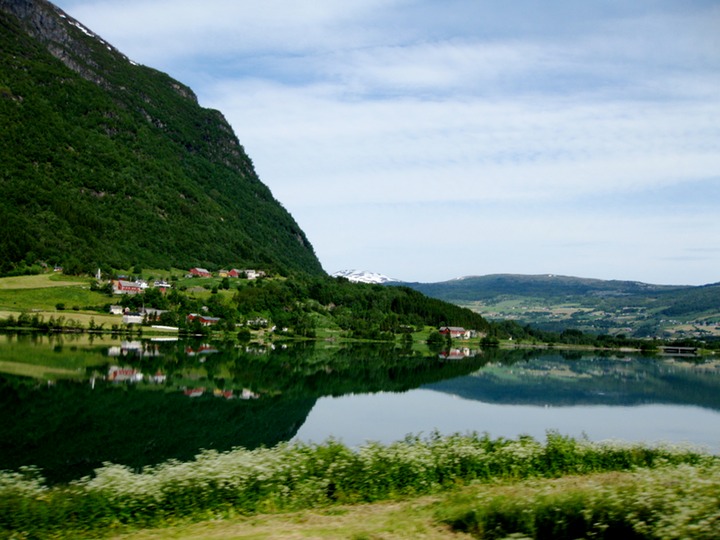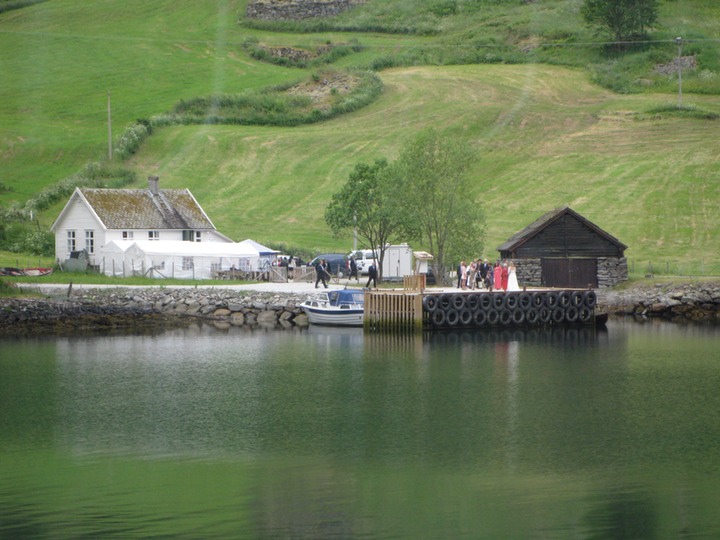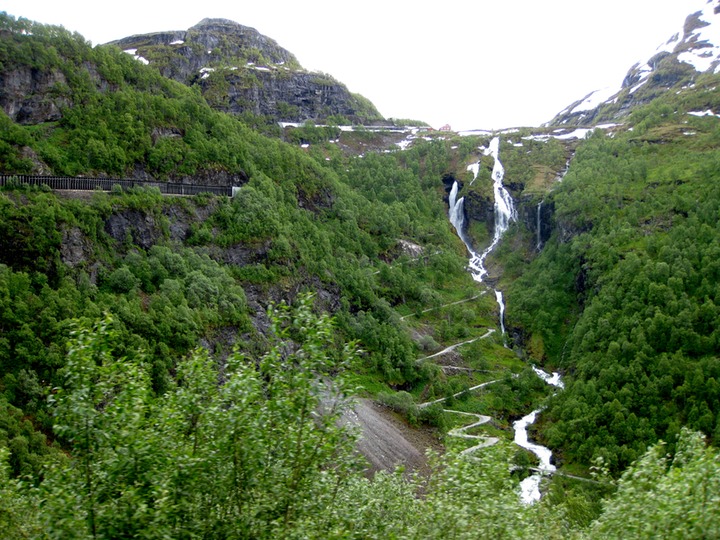For the past two days we have been surrounded by incredible natural beauty. The road we took south through the Vatedalen Valley rivals the Geiranger fjord in landscapes. Probably the only reason it is not inundated with tourists is that, unlike fjords, it is inaccessible to 3000-passenger cruise ships. The views were stunning and varied: sheer rock walls, farms, waterfalls, racing streams, forests and lakes . . . and all with good roads (the kind with yellow lines down the middle!) and only a few tunnels.

We passed what looked to us like a glacier and then, as confirmation that we’d been right, stumbled upon the Norwegian Glacier Museum. Its exhibits were wonderfully well done. Like another museum we visited recently, this one had beautiful movies without any words--only music. This is a good solution to the problem of addressing the great variety of languages among the tourists visiting Norway: the pictures really do speak for themselves.
Recently, no day of driving has been complete without at least a minor adventure: thus, as we made our way into Sogndal’s town center and looked for the “I” (for “tourist information”) sign, the only one we saw directed us onto a road--a road that soon became a narrow track--a track taking us away from and far, far above the town center. There was no way to turn around, so we just had to keep going, accompanied by David’s curses at each turn, bump, blind driveway. . . . Eventually we were dumped onto a more heavily trafficked road that led us back to the city. We finally found a place to park and walked to the tourist office (in the center of town, of course--oblivious to all around us, we’d passed within 50 meters of it at the beginning of our tour of Sogndal’s suburbs). In impeccible English, the young woman at the desk acknowledged that, indeed, the sign whose directions we had followed was no longer correct. She got on the phone to express her chagrin on our behalf to somebody upstairs.
We camped there anyway.
The next day we drove only a few miles north to take a 15-minute ferry ride to Urnes. As we’ve grown to expect, the secondary road from the main road down to the ferry was about a mile and a half of narrow, winding descent with some hairpins, blind turns and, once, barely a single lane.
Leaving Rover in the small parking lot, we took the ferry and walked up the 1 km hill to the Urnes stave church, built in 1130.

We barely beat a tour bus to the spot, took the tour (again delivered in impeccible English) and had a much easier walk down the hill to catch the boat back to Rover. The bus full of lazy tourists made it onto the boat with us, so we decided to tag along behind, back up the hill, and let it clear traffic for us. A good strategy: we met three cars and three motorhomes, all of which pulled over and stopped to let the bus (and us) go by.
Then we drove on to our next ferry (“Do they never cease?” you ask. No, they don’t--at least, not anywhere near the west coast of Norway). We didn’t time this one particularly well, but during the three hours we had to wait, we ate lunch, toured another 900-year-old stave church, and visited a ship museum right by the ferry dock.
The day was very cloudy, but the ferry to Gudvangen featured two hours of non-stop scenery. Even more important, it eliminated a lot of narrow, winding roads for us. It rained on the way, but these big boats have comfortable salons with large windows, so we stayed dry and enjoyed the view. As we passed a wedding party being photographed on a dock, the captain blew the ship’s whistle to them.

Gudvangen is only a ferry dock, a few houses and a campground, but all of it in incredible surroundings. We stayed two nights, using the location to take a bus to Flåm and avoid driving through 12 miles of tunnels, but when we arrived we saw many motorhomes whose drivers apparently don’t mind going through long tunnels with lots of bus traffic.
Flåm is another major tourist attraction, and they do it well. It is home to a famous mountain train that connects with a line running between Bergen and Oslo. However, like most of the passengers, we took it to the end of the line and back again for the sake of its spectacular views.

On the way up, there was hardly anyone in our car; on the return, though, the train was full of people, many of them Japanese tourists, nearly all carrying expensive cameras
